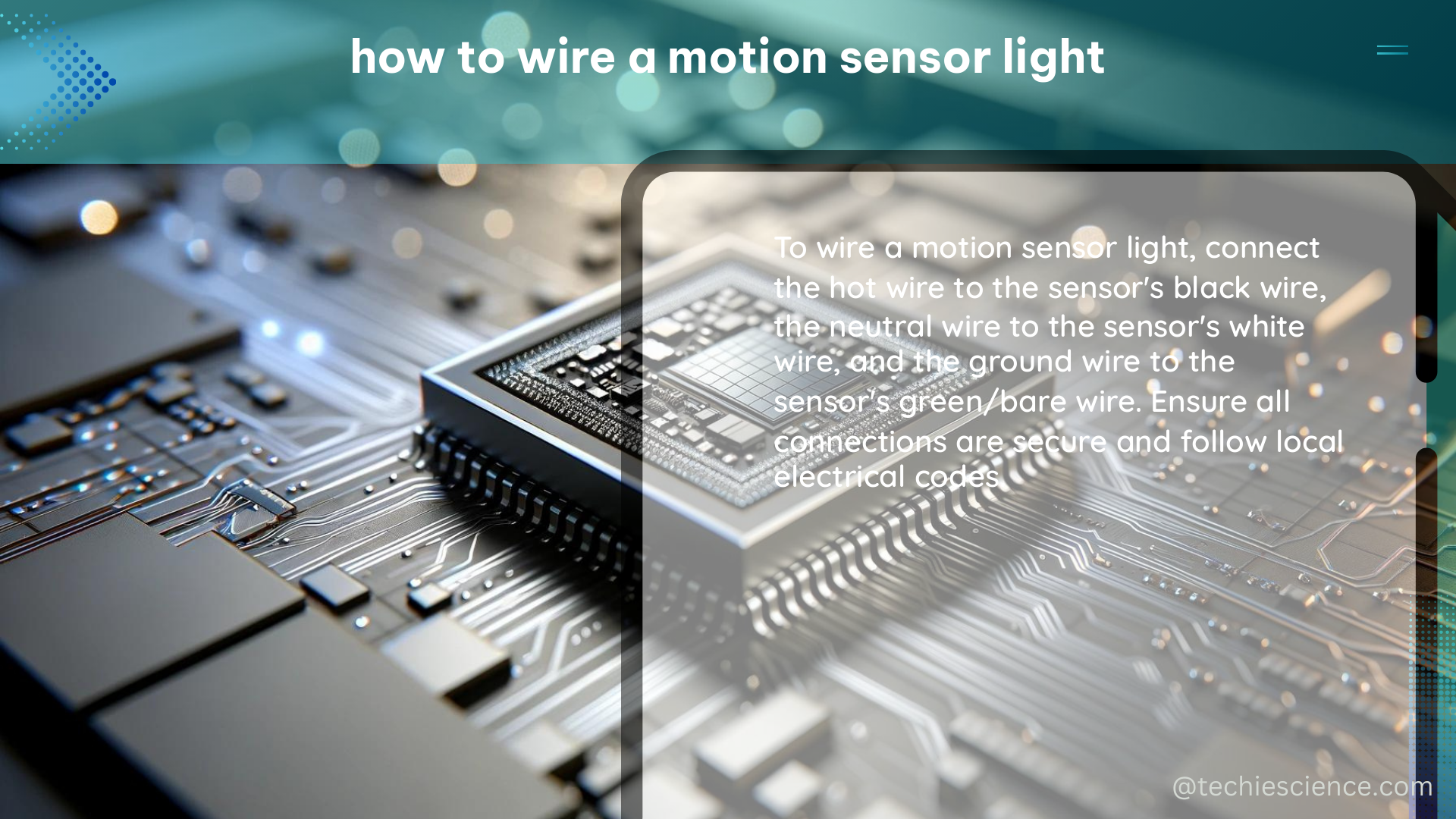Wiring a motion sensor light can be a straightforward task, but it requires attention to detail and adherence to safety protocols. This comprehensive guide will walk you through the process step-by-step, ensuring your motion sensor light is installed correctly and functions seamlessly.
Necessary Tools and Materials
Before you begin, ensure you have the following tools and materials on hand:
- Screwdriver set (flathead and Phillips head)
- Wire stripper/cutter
- Wire connectors (UL-listed wire nuts)
- Electrical tape (UL-listed vinyl electrical tape)
- Ladder or step stool (if mounting the light at a height)
- Voltage tester (optional, but recommended for safety)
Safety Precautions

Safety should be your top priority when wiring a motion sensor light. Before starting, ensure the power to the existing light fixture or circuit is turned off at the circuit breaker. Use a voltage tester to confirm the power is off before proceeding.
Step-by-Step Wiring Guide
-
Identify the Wires: The motion sensor light will have three wires – black, white, and red. The existing light fixture will have a white and black wire.
-
Connect the Wires:
- Connect the red wire from the motion sensor light to the black wire from the existing fixture.
- Connect the white wire from the motion sensor light to the white wire from the existing fixture.
- Use UL-listed wire nuts to secure the connections, ensuring they are tight and secure.
-
Wrap the wire nuts with electrical tape for added insulation and protection.
-
Mount the Motion Sensor Light:
- Position the motion sensor light in the desired location, ensuring it is securely mounted.
- If mounting at a height, use a ladder or step stool to reach the installation point safely.
-
Follow the manufacturer’s instructions for the specific mounting method, as it may vary.
-
Adjust the Settings (if necessary):
- Some motion sensor lights may require adjustments to the sensitivity, detection range, or duration of the light activation.
-
Use a small screwdriver to adjust the settings according to the manufacturer’s instructions, located on the back of the motion sensor or in the product manual.
-
Restore Power and Test the Motion Sensor Light:
- Turn the power back on at the circuit breaker.
- Observe the motion sensor light to ensure it is functioning correctly, detecting motion and activating the light as expected.
- Make any necessary adjustments to the settings to optimize the performance.
Technical Specifications
- Voltage: 120V AC
- Wattage: Varies by light fixture (typically 10-100 watts)
- Wire Gauge: 14 AWG (American Wire Gauge)
- Wire Connectors: UL-listed wire nuts
- Electrical Tape: UL-listed vinyl electrical tape
Troubleshooting Tips
If the motion sensor light is not functioning as expected, consider the following troubleshooting steps:
- Check the Power: Ensure the circuit breaker is turned on and the power is restored to the circuit.
- Verify the Wiring Connections: Double-check that the wires are properly connected and secured with wire nuts.
- Adjust the Settings: Review the manufacturer’s instructions and adjust the sensitivity, detection range, or duration settings as needed.
- Replace the Motion Sensor Light: If the issue persists, the motion sensor light may be faulty and require replacement.
Conclusion
Wiring a motion sensor light can be a straightforward DIY project with the right tools, materials, and safety precautions. By following the step-by-step guide and adhering to the technical specifications, you can ensure your motion sensor light is installed correctly and functioning optimally. Remember to always prioritize safety and consult the manufacturer’s instructions for any specific requirements or adjustments.
References
- Wiring a Motion Sensor-to an LED Light – YouTube
- How to wire switch for outside motion sensing light – DIY Stack Exchange
- Wiring a Motion Sensor Flood Light | DIY Home Improvement Forum

The lambdageeks.com Core SME Team is a group of experienced subject matter experts from diverse scientific and technical fields including Physics, Chemistry, Technology,Electronics & Electrical Engineering, Automotive, Mechanical Engineering. Our team collaborates to create high-quality, well-researched articles on a wide range of science and technology topics for the lambdageeks.com website.
All Our Senior SME are having more than 7 Years of experience in the respective fields . They are either Working Industry Professionals or assocaited With different Universities. Refer Our Authors Page to get to know About our Core SMEs.